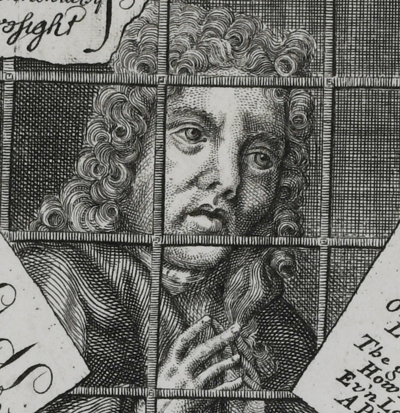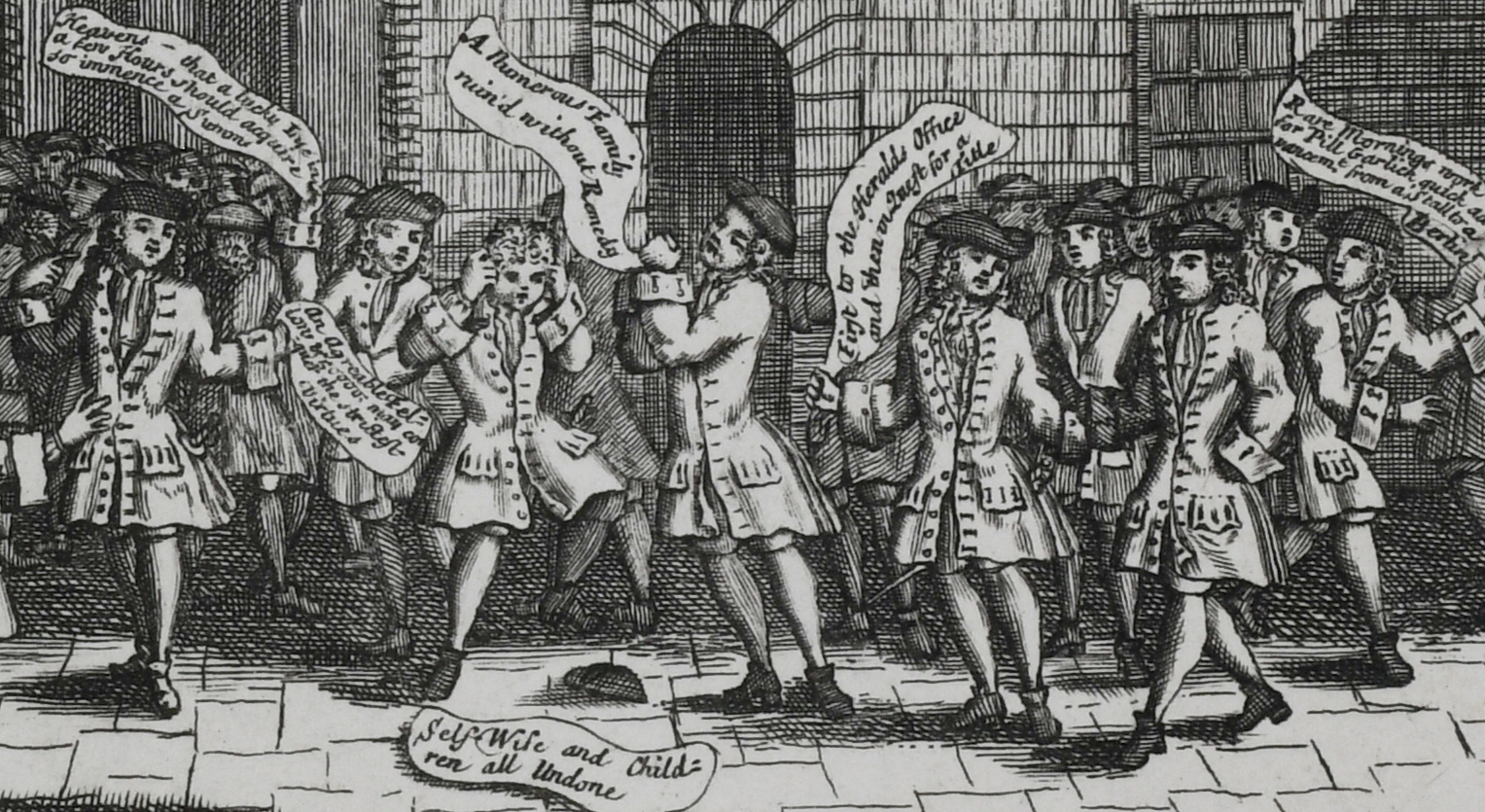DESCRIPTION: SOLD
"The Bubbler's Medley, or a Sketch of the Times: Being Europe's Memorial for the Year 1720" is a trompe l’oeil-style satirical print published by Carington Bowles (1724-1793) from London ca 1785. At top center this plate shows an unsuccessful speculator staring out from behind the bars of a debtors prison. Bottom center with the text of "A South Seas Ballad", a satirical poem by Jonathan Swift, written in response to the South Sea Bubble financial crisis. It criticizes the greed and folly of investors who were caught up in the speculative frenzy. One of several re-issues, this on wove paper thus ca. 1780 - 1790. Page 23.
 "Behold a poor dejected wretch "Behold a poor dejected wretch
Who kept a sea-coach of late" ...
In 1720, England experienced a financial crisis known as the South Sea Bubble. The South Sea Company was established in 1711 to consolidate and decrease the cost of the national debt. Its main business was initially to supply African slaves to the islands in the "South Seas" and South America, although this trade did not yield significant profits. Instead, the company expanded its operations to deal in government debt, and this led to the creation of a notorious economic bubble that ultimately collapsed suddenly, resulting in the ruin of numerous investors and a decline in the national economy.
 "A numerous family ruin'd without Remedy" ... "A numerous family ruin'd without Remedy" ...
The scandal eventually led to a parliamentary inquiry, and those who had profited corruptly had their personal assets confiscated. The South Sea Company was restructured and continued to operate for more than a century.
Printed and sold by Carrington Bowles, number 69 in St. Paul's Church Yard, London. Carington Bowles was an English print publisher and map seller who lived from 1724 to 1793. He was born in Bath, England, and was the son of a successful print publisher and seller, John Bowles. After his father's death in 1779, Carington Bowles inherited his business and continued to publish and sell maps, prints, and books.
Carington Bowles was known for producing and selling high-quality maps, often working with prominent cartographers of his time. His business also sold prints of famous landmarks, portraits, and illustrations of contemporary events. Bowles was a member of the Stationers' Company and the Society of Antiquaries and was recognized as a leading publisher and seller of prints and maps in 18th century England.
Note: Wove paper began to replace laid paper for printing in the late 18th century. Laid paper had been the preferred choice for printing for centuries. Its unique striped appearance under light was created by the wire mesh used in the papermaking process. In the late 18th century, a method of making paper on a continuous wire mesh was developed, resulting in a smooth, uniform paper called wove paper. Wove paper was easier and faster to produce than laid paper, and its smooth surface made it ideal for printing fine lines and details.
PUBLICATION DATE: 1785
GEOGRAPHIC AREA: England
BODY OF WATER: N/A
CONDITION: Good.
> .5" margins. Washed. Light discoloration at top center. Solid. Heavy paper.
COLORING: None
ENGRAVER:
SIZE: 10
" x
13 "
ITEM PHYSICAL LOCATION: 1
PRICE: $
ADD TO CART

|